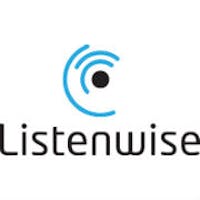Now Trending: K-12 Podcasting
I have always believed in the power of audio. For decades as an NPR reporter, I created captivating audio stories. But it’s only been in the past few years that the rest of the world has caught up to my love of a good audio story, told by the people affected, and surrounded by sound effects and music that set the scene and mood. It’s called podcasting. And it’s experiencing a surge of interest, especially in K-12 classrooms.
As the CEO of Listenwise, a listening skill-building company, and the host of the Student Podcast PODCAST, I am seeing the podcasting landscape in education explode. We are on the forefront of an exciting time when audio can bring the world into the classroom, and students can use audio to share what they know with the world. Thousands of classrooms across grade levels, demographics and locations are podcasting. Over six thousand classes submitted podcast entries to the 2018 NPR Student Podcast Challenge.
This upswell really began around the launch of the popular podcast Serial in 2015. TeachersPayTeachers.com, an online marketplace for lesson plans, reported that their annual downloads of lessons based on podcasts increased 650 percent that year. Teacher Michael Godsey, an early adopter of teaching with podcasts, authored many of those lessons.
I’ve continued to see a rising number of conference sessions on podcasting in the classroom. At this year’s ISTE conference, there were 23 sessions about podcasting held over three days.
Eighth grade teachers Matt Stokes and Katie Rogers reflect on podcasting as a powerful way to give legitimacy to a student’s voice and create a space to capture someone’s spirit:
This trend makes sense; the human voice is captivating. Hearing directly from someone who experienced an event is meaningful. Audio allows us to create movies in our minds, and this is highly engaging for students. It allows them to connect at a deeper level to the content they are learning.
Podcasting fosters authentic, passion-driven learning. Listen to this example to hear how students used their voices to debunk myths and stereotypes about modern life on Native American reservations:
Creating Podcasts in the Classroom
The process of creating podcasts addresses many important 21st-century skills and competencies, including communication, critical thinking, creativity and collaboration. Podcasting can also address Common Core State Standards, including key speaking and listening skills. Educators have discovered that listening to podcasts can promote deeper learning for students using a modality that has not been traditionally featured in the classroom.
Matt Stokes and Katie Rogers reflect on how podcast creation puts students in the driver's seat as they learn how to teach others with project-based lessons:
Students are drawn to expressing themselves through podcasting. Not only can they emulate real journalists and famous podcasters, they can design their own learning experiences by actively exploring real-world issues and problems, developing ideas and theories, and pursuing answers and solutions. Recording and sharing what they learn validates their knowledge and empowers them.
Listening to Mentor Podcasts
To set rigorous expectations before beginning your classroom podcasting projects, I recommend having your students listen to high-quality mentor audio stories. Listenwise provides free access to a collection of more than 1900 audio stories from NPR curated for classroom use, featuring relevant topics that align with curriculum in English language arts, social studies and science. These examples showcase the sounds of professional podcasts and present models for students to emulate. Public radio podcasts also offer students a new and exciting vehicle for learning important content.
After sharing great audio stories with students, you should select a purpose for the podcasts that aligns with your curriculum. Will students create podcasts that inform, persuade, analyze, reflect, tell a story, or some combination? Once you have defined a task and product, you can select the appropriate production format for your students’ podcasts. Will podcasts be commentary by a single speaker? Will they be interviews or conversations? Will they be investigative reports involving multiple perspectives on an issue or topic?
A variety of project lesson ideas can be found on the Student Podcast PODCAST.
Podcasting and Literacy
Not only can listening to mentor texts support podcast creation, it can build important literacy skills.

Currently, 22 states test listening on their annual English Language Arts assessments. Listening is also assessed on the WIDA ACCESS test, as well as other state English language tests, as it is a key aspect of learning a new language. California includes listening comprehension on the CAASPP and the ELPAC, and many schools we work with note that listening is a skill that still demands a heavy instructional focus in the classroom. Just 43 percent of 8th and 11th graders met listening standards last year across California.
The shift toward teaching and assessing listening makes sense because it is in line with the research on listening and learning—better listeners are better learners. Teaching and learning with podcasts can help to improve listening skills.
Listening skills are increasingly important to success in college and careers. A 2017 survey of 1,000 employers indicated that listening is the 2nd highest skill employers want from new hires. All of this means that more schools and districts are looking for tools to support development of their students’ listening comprehension skills.
We live in a time when digital content—in the form of text, video and audio—is widely available, and podcasting can be done with ubiquitous tools—smartphones and computers. This makes it an exciting time to try something that is new and trending with your students.
Teach with listening. Engage with listening. Create with listening.



